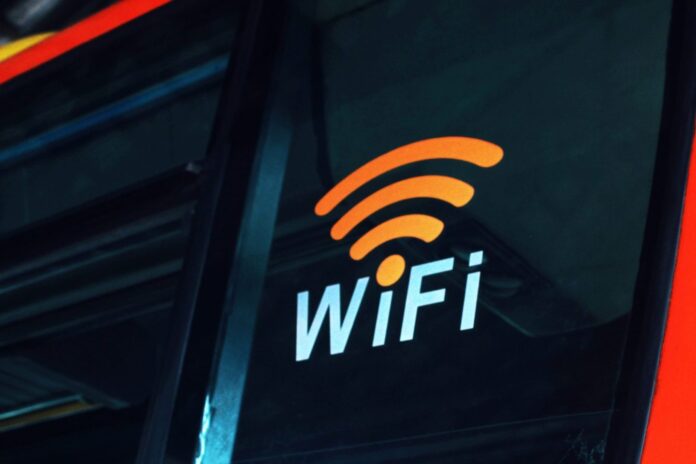Wi-Fi 7 may have only just started rolling out, but TP-Link is already working on what comes next — it’s called Wi-Fi 8.
The company said on Monday that it has successfully tested an early prototype of Wi-Fi 8 hardware — a step that moves the industry closer to the next stage of wireless connectivity.
Although details from the test were limited, TP-Link confirmed that it had validated Wi-Fi 8’s (802.11bn) beacon and data-transfer functions, proving that the technology works in practice.
The prototype was developed through an industry partnership, and TP-Link expects consumer devices to arrive before the Wi-Fi 8 standard is officially ratified.
The Institute of Electrical and Electronics Engineers (IEEE) aims to finalise that standard by 2028, suggesting the technology could begin appearing in homes and workplaces earlier.
Like previous generations, Wi-Fi 8 is expected to operate across the 2.4 GHz, 5 GHz, and 6 GHz bands.
Its theoretical channel bandwidth remains at 320 MHz, with top speeds around 46 Gbps.
However, rather than chasing record peak speeds, the main improvement lies in how Wi-Fi 8 handles real-world conditions.
Better signal management could boost everyday throughput by about 25 per cent, helping networks maintain strong performance even when several devices are connected at once.
Today’s Wi-Fi 7 systems already reach impressive numbers — multi-gigabit speeds, latency below ten milliseconds, and packet loss rates under 0.1 per cent.
But Wi-Fi 8 is designed to push those boundaries further, especially in difficult environments where interference, range, or congestion usually slow performance.
According to the IEEE, the new standard aims to deliver:
- At least 25 per cent faster throughput in weak-signal conditions.
- 25 per cent lower latency for most users.
- 25 per cent fewer dropped packets, particularly when devices move between access points.
TP-Link’s early prototypes include several features aimed at reliability and efficiency.
Enhanced Long Range (ELR) and Distributed Resource Units (DRU) extend range and optimise resource use, while Unequal Modulation (UEQM) helps multiple devices maintain stable connections at different signal strengths.
Together, these updates are expected to improve both coverage and consistency — two areas that often limit today’s Wi-Fi networks.
Unlike previous upgrades that focused on headline speeds, Wi-Fi 8 emphasises stability and reliability.
Chipmakers such as Qualcomm have echoed this focus, saying that the next generation of Wi-Fi should prioritise smoother performance, lower latency, and better coordination across large numbers of connected devices rather than chasing raw bandwidth gains.
If successful, Wi-Fi 8 could reshape how wireless technology supports homes, enterprises, and public spaces.
In business settings, Wi-Fi 8 could bring wired-level dependability to mobile operations. Factories, hospitals, logistics centres, and office campuses increasingly rely on wireless systems for automation and real-time decision-making. The new standard may allow collaborative robots, industrial machines, drones, and autonomous vehicles to share data seamlessly, even while moving — creating a network that supports AI-driven operations without interruptions.
At home, the growing use of smart devices and connected services continues to raise network demands. From predictive automation and entertainment to health monitoring, these systems depend on constant, reliable connections. Wi-Fi 8 could help maintain stable performance even in crowded apartment complexes where interference and congestion often limit existing Wi-Fi standards.
In public spaces such as airports, stadiums, and transport hubs, Wi-Fi 8 may support smooth mobility for thousands of users at once. It could make real-time services like AR navigation, live video sharing, and translation more dependable, while also powering critical systems such as surveillance, emergency communications, and asset tracking during peak hours.
The technology is not expected to receive official certification until 2027, with final approval likely a year later.
TP-Link hasn’t shared many details about its recent breakthrough, including who its partners are, but industry observers suggest that major hardware makers like Qualcomm or Intel could be part of the collaboration.
While it may still be years before Wi-Fi 8 becomes mainstream, the early progress hints at a future where wireless connections are not just faster but also more dependable — capable of supporting the connected environments that homes, businesses, and cities increasingly depend on.
(Photo by Dreamlike Street)
See also: How the 6G rollout will learn from 5G’s mistakes

Want to discover how IoT is transforming telecoms and connectivity? Join the IoT Tech Expo in Amsterdam, California, and London. Explore how innovations in 5G, edge computing, and IoT are shaping the future of networks and services. The event is part of TechEx and co-located with other leading technology conferences, click here for more information.
Telecoms News is powered by TechForge Media. Explore other upcoming enterprise technology events and webinars here.
👇Follow more 👇
👉 bdphone.com
👉 ultractivation.com
👉 trainingreferral.com
👉 shaplafood.com
👉 bangladeshi.help
👉 www.forexdhaka.com
👉 uncommunication.com
👉 ultra-sim.com
👉 forexdhaka.com
👉 ultrafxfund.com
👉 bdphoneonline.com
👉 dailyadvice.us
